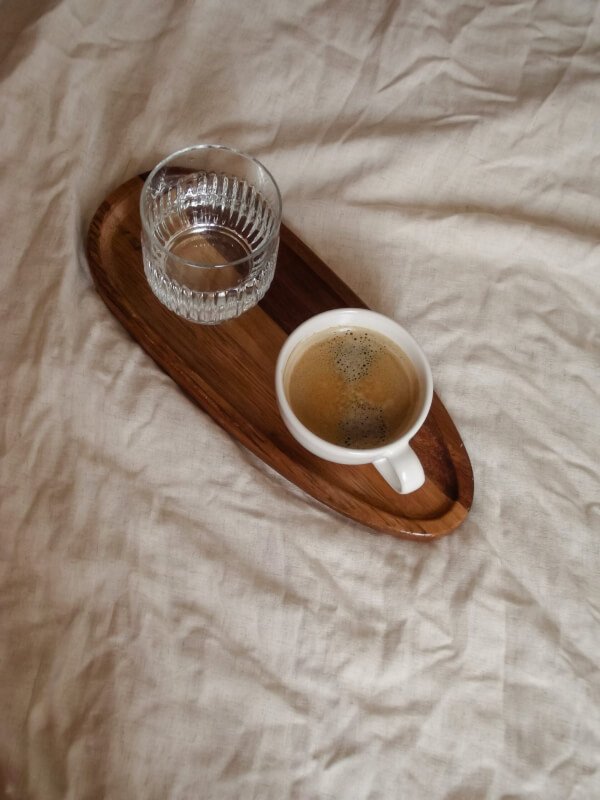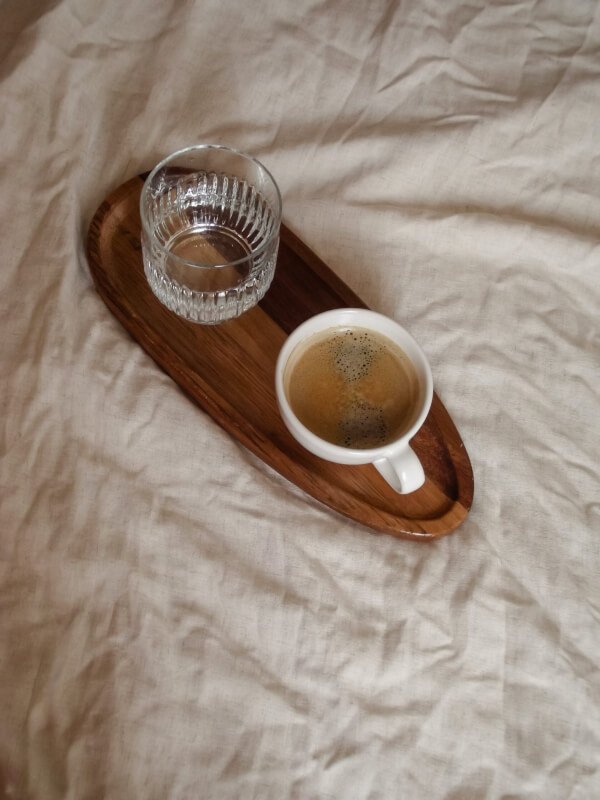Imagine yourself sitting in a cozy tea shop, sipping a warm cup of tea while being surrounded by an array of colorful, aromatic tea leaves. As you take a moment to appreciate the beauty of the specialty tea leaves, you can’t help but wonder: How can I truly appreciate their visual aesthetics? Whether you’re a tea connoisseur or a casual tea lover, understanding the visual aspects of specialty tea leaves can enhance your overall tea-drinking experience. In this article, we will explore the various elements that contribute to the visual beauty of tea leaves and provide tips on how to truly appreciate their splendid aesthetics.

Exploring Specialty Tea Leaves
If you’re a tea lover looking to enhance your tea drinking experience, one aspect you may have overlooked is the visual aesthetics of specialty tea leaves. Appreciating the beauty and intricacy of tea leaves can add a new dimension to your tea experience. In this article, we will delve into the world of specialty tea, understanding its production methods, and exploring the factors that influence its visual aesthetics.
Understanding Specialty Tea
Specialty tea is a category of tea that encompasses a wide range of high-quality, artisanal teas. Unlike mass-produced teas, specialty teas are carefully cultivated, harvested, and processed to ensure exceptional flavor and aroma. These teas often come from specific regions known for their unique tea varietals and cultivation practices.
Methods of Tea Production
Tea production involves several steps, including cultivation, harvesting, and processing. Each of these steps plays a crucial role in determining the final appearance of the tea leaves. Cultivation conditions, such as soil quality, altitude, and climate, greatly impact the visual characteristics of the tea leaves. Additionally, the processing techniques, which can include withering, rolling, oxidation, and firing, further influence the appearance of the leaves.

Overview of Visual Aesthetics
The visual aesthetics of specialty tea leaves encompass various factors, such as leaf shape and size, color variations, texture, and surface characteristics. These elements, when closely examined, can provide valuable insights into the quality and uniqueness of the tea. Let’s explore each of these aspects in more detail.
Factors Influencing Visual Aesthetics
Several factors contribute to the visual aesthetics of specialty tea leaves. The first factor is the tea plant variety. Different tea plant varieties have distinct leaf shapes, sizes, and colors. Popular varieties include Camellia sinensis var. sinensis and Camellia sinensis var. assamica.
Cultivation conditions also have a significant impact on the appearance of the tea leaves. Factors such as temperature, humidity, soil composition, and elevation can influence the leaf’s overall appearance and quality. Tea leaves grown in higher elevations tend to have more vibrant colors and delicate textures.
The processing techniques used during tea production greatly influence the visual aesthetics of the leaves. Processing methods such as oxidation, rolling, and firing can alter the color, texture, and shape of the leaves, creating unique and visually appealing characteristics.
Examining Tea Leaf Appearance
When assessing the visual aesthetics of specialty tea leaves, it’s essential to pay attention to various aspects. The shape and size of the leaves provide valuable information about the tea’s quality. Whole, unbroken leaves are typically considered superior to broken or fragmented leaves.
Color variations in tea leaves can be an indicator of the processing methods used. Green tea leaves, for example, retain their natural green color due to minimal oxidation, while black tea leaves undergo extensive oxidation, resulting in a dark brown color.
Texture and surface characteristics also play a role in evaluating tea leaves. Smooth, supple leaves are often preferred over coarse or brittle ones. Additionally, observing the unfurling potential of tea leaves can provide clues about their quality and freshness.

Appreciating Tea Leaf Colors
Tea leaves come in various colors, each representing a different type of tea and processing method. Understanding the colors of tea leaves can deepen your appreciation for each tea variety. Let’s explore some of the most common tea leaf colors:
Green Tea Leaves
Green tea leaves retain their vibrant green color due to minimal oxidation. The leaves are usually delicate and have a fresh, grassy aroma. The visual appeal of green tea lies in its vivid green and often velvety appearance, which signifies its freshness.
White Tea Leaves
White tea leaves are harvested at an early stage and undergo minimal processing. These leaves have a silver-white color, covered with fine white hairs. The visual aesthetics of white tea leaves are characterized by their delicate and fluffy appearance, reflecting the tea’s subtle flavor and gentle fragrance.
Black Tea Leaves
Black tea leaves are fully oxidized, resulting in a dark brown to black color. These leaves are generally larger and more robust in appearance. The visual appeal of black tea lies in its rich, dark color and often twisted or curled shape.
Oolong Tea Leaves
Oolong tea leaves are partially oxidized, providing a wide range of color variations. The leaves can range from green to dark brown, depending on the level of oxidation. Oolong tea leaves often have a distinctive twisting or curling shape, adding to their visual appeal.
Pu-erh Tea Leaves
Pu-erh tea leaves undergo a unique fermentation process, resulting in a deep reddish-brown color. The leaves are often compressed into cakes or bricks. The visual aesthetics of Pu-erh tea lie in its earthy, rustic appearance, reflecting its complex and aged flavors.
Characteristics of High-Quality Leaves
When exploring the visual aesthetics of specialty tea leaves, it’s essential to distinguish high-quality leaves from inferior ones. Several characteristics signify the superiority of tea leaves. Let’s examine some key indicators of high-quality leaves:
Whole Leaves vs. Broken Leaves
Whole, unbroken tea leaves are generally considered superior to broken or fragmented leaves. Whole leaves indicate proper handling and minimal damage during harvesting and processing, ensuring the retention of essential oils and flavors.
Consistency in Shape and Size
High-quality leaves exhibit consistency in shape and size. Leaves of uniform shape and size suggest skillful processing techniques and meticulous attention to detail. This consistency contributes to a pleasing visual aesthetic when examining the tea leaves.
Overall Appearance and Brightness
The overall appearance and brightness of tea leaves are crucial indicators of quality. Bright, vibrant leaves often signify freshness and proper processing. Dull or discolored leaves may indicate suboptimal growing or processing conditions.
Softness and Suppleness
High-quality tea leaves have a certain softness and suppleness when touched. Leaves that feel brittle or rough to the touch may indicate lower quality or improper handling during processing.
Using Sight to Evaluate Quality
Visual observation plays a vital role in evaluating the quality of specialty tea leaves. By utilizing your sense of sight, you can gather useful information about the tea’s overall characteristics. Here are some key factors to consider when assessing tea leaves visually:
Dry Leaf Observation
Examining the dry leaves allows you to observe their appearance before brewing. Look for qualities such as color, shape, size, uniformity, and brightness. These visual cues can provide valuable insights into the tea’s quality and flavor profile.
Infused Leaf Examination
After steeping the tea leaves, examining the infused leaves can provide further information about their quality. Note the color change, unfurling pattern, and overall appearance. High-quality leaves often exhibit an attractive and consistent appearance during and after brewing.
Color of Infused Liquor
The color of the infused liquor is another visual indicator of tea quality. Different tea types produce distinct liquor colors, ranging from pale yellow and light green for green teas to deep amber or reddish-brown for black teas. The clarity, brightness, and depth of color can offer insights into the tea’s flavor and aroma.
Additional Visual Indicators
In addition to the characteristics mentioned above, there are several other visual indicators to consider when appreciating the visual aesthetics of specialty tea leaves:
Buds and Tips
Tea buds and tips are often considered a sign of high-quality tea. These young, tender leaves add complexity and delicacy to the tea’s flavor profile. Look for the presence of intact buds or tips in the tea leaves.
Presence of Fine Hairs
Fine, silvery or white hairs on tea leaves are an indication of the tea’s high-quality and freshness. These hairs are more commonly found in white and some green teas.
Leaf Veins and Stems
The visibility and condition of leaf veins and stems can reveal information about the tea’s processing. Fine veins and stems are generally preferred, indicating careful processing and minimal damage.
Leaf Uniformity
Uniformity in leaf appearance, such as shape, size, and color, indicates meticulous processing and sorting. Leaves with consistent characteristics are visually pleasing and suggest a higher overall quality.
Significance of Visual Aesthetics
Understanding and appreciating the visual aesthetics of specialty tea leaves can have several significant benefits for tea enthusiasts. Let’s explore some of the reasons why paying attention to tea leaf appearance is important:
Esthetic Pleasure
Appreciating the visual beauty of tea leaves offers a sensory pleasure that complements the taste and aroma experience. The vibrant colors, delicate textures, and intricate patterns add an element of visual delight, enhancing the overall enjoyment of tea.
Indication of High-Quality Teas
The visual characteristics of tea leaves provide valuable insights into the quality and craftsmanship of the tea. By closely examining the leaves, you can discern whether the tea has been carefully cultivated, harvested, and processed, ultimately leading to a more satisfying tea-drinking experience.
Cultural and Artistic Value
Tea has a rich cultural and artistic heritage. By appreciating the visual aesthetics of tea leaves, you become part of this rich tradition. Understanding the significance of tea aesthetics can deepen your understanding and connection with this ancient beverage.
Practical Tips for Visual Appreciation
To fully appreciate the visual aesthetics of specialty tea leaves, consider implementing the following practical tips:
Proper Lighting and Background
Ensure you have adequate lighting to observe the tea leaves effectively. Natural light or a well-lit room can provide the best visibility. Additionally, choose a neutral background that allows the colors and characteristics of the tea leaves to stand out.
Using Contrasting Surfaces
Experiment with different surfaces to highlight the visual qualities of tea leaves. Placing leaves on a smooth, white surface can enhance the contrast and allow for detailed observation. Alternatively, using a shallow dark-colored dish can emphasize the color variations in the leaves.
Observation Tools and Magnification
Use tools such as magnifying glasses or macro lenses to observe the minute details of the tea leaves. This can unveil hidden intricacies and enhance your visual appreciation.
Engage Multiple Senses
Remember that tea appreciation extends beyond sight alone. To fully immerse yourself in the sensory experience, engage your other senses as well. Smell the aroma of the leaves, feel their texture, and taste the resulting brew. By involving multiple senses, you can deepen your understanding and enjoyment of tea.
Enhancing Tea Enjoyment
Appreciating the visual aesthetics of specialty tea leaves goes hand in hand with enhancing your overall tea enjoyment. Here are some additional suggestions to elevate your tea-drinking experience:
Educating Your Eye
Take the time to educate your eye by regularly observing and comparing different tea leaves. By training your visual senses, you’ll become more adept at recognizing and appreciating the unique characteristics of specialty teas.
Exploring Diverse Teas
Broaden your tea horizons by exploring a wide range of specialty teas. Each tea variety offers a distinct visual experience, allowing you to uncover the beauty and diversity within the world of tea.
Developing an Appreciation Ritual
Create a personal tea appreciation ritual that incorporates visual observation. Set aside dedicated time to examine and admire the tea leaves before brewing your cup. This ritual can add a meditative and reflective element to your tea-drinking practice.
Sharing and Discussing Experiences
Tea appreciation is a communal experience that can be enhanced through sharing and discussing your experiences with fellow tea enthusiasts. Engage in conversations, participate in tea tastings, and exchange thoughts on the visual aesthetics of tea leaves. This camaraderie can deepen your appreciation and foster a greater understanding of specialty tea.
In conclusion, appreciating the visual aesthetics of specialty tea leaves is a delightful and rewarding journey. By exploring the factors that influence tea leaf appearance, examining their shape, size, color, texture, and other characteristics, you can develop a deeper understanding and appreciation for tea. So, next time you brew a cup of specialty tea, take a moment to marvel at the beauty of the leaves and allow their visual appeal to enhance your tea-drinking experience.


